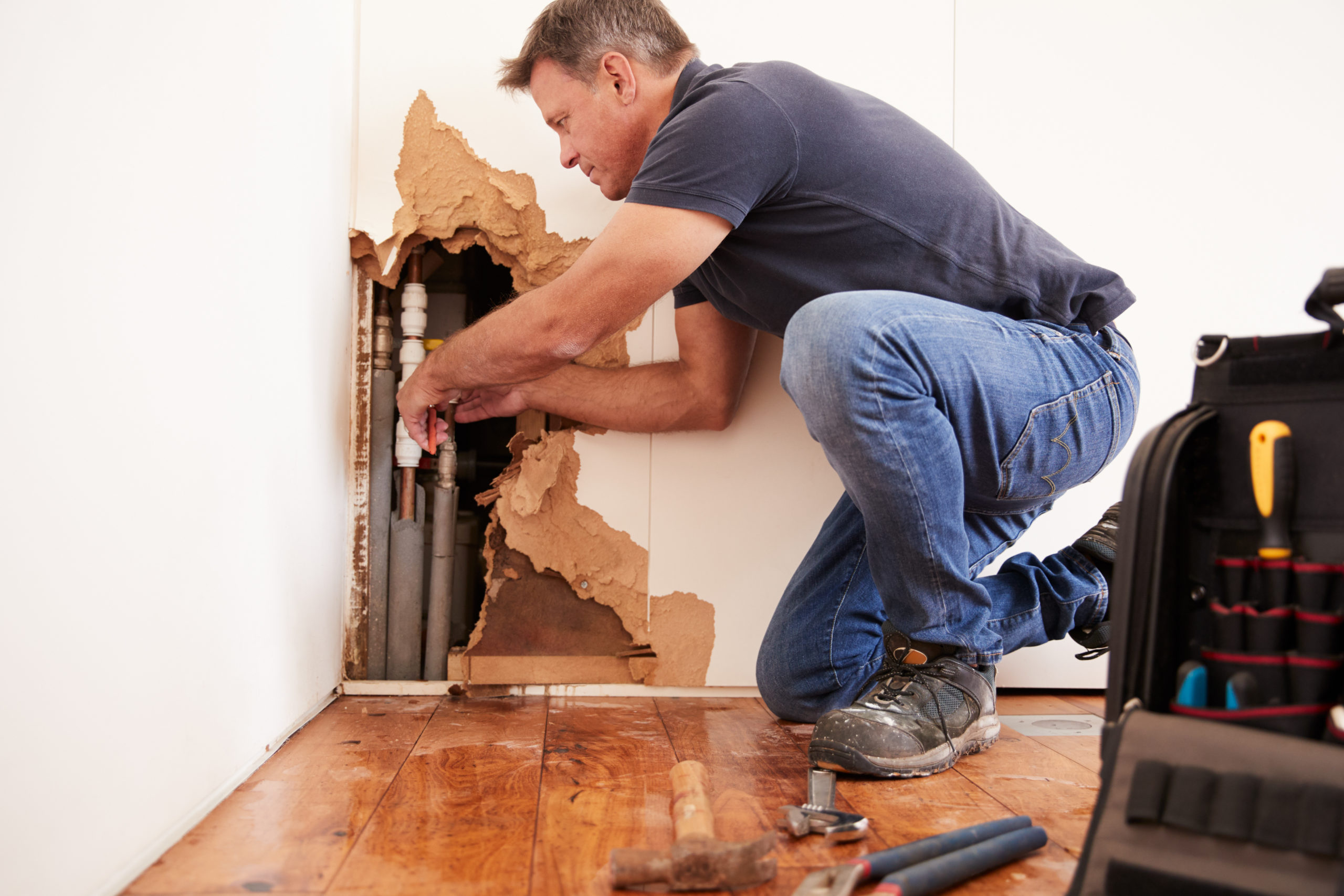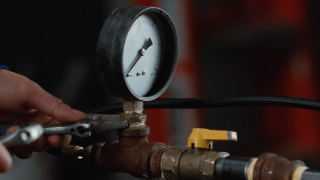Obtaining Acquainted with Home Plumbing Basics: A Beginner's Handbook
Obtaining Acquainted with Home Plumbing Basics: A Beginner's Handbook
Blog Article
Almost everyone will have their own unique rationale on the subject of How Does the Plumbing Work in Your Home?.

Plumbing is a crucial element of any kind of home, responsible for providing tidy water for drinking, cooking, and showering, in addition to eliminating wastewater securely. Recognizing the basics of home plumbing is crucial for every home owner to make sure proper upkeep, troubleshooting, and, if required, fixings. In this beginner's guide, we'll cover the essential principles of home plumbing to help you come to be a lot more familiar with exactly how it functions.
Water Furnace
The water heating system is accountable for home heating water for residential use, including bathing, cooking, and cleaning. Typical sorts of hot water heater include tank-type water heaters, tankless (on-demand) water heaters, and heat pump water heaters. The water heater is connected to the supply of water system and provides warm water to plumbing components as required.
Water drainage System
The water drainage system gets rid of wastewater from your home and lugs it away to a sewer therapy center or septic tank. It contains a network of pipelines, installations, and components that deliver wastewater from plumbing components to the major sewage system line or sewage-disposal tank. Appropriate drain is necessary to avoid blockages, backups, and sewage leaks.
Ventilation System
The air flow system assists preserve proper air pressure and avoid sewage system gases from entering your home. Vent pipes, also known as air vent stacks, extend from plumbing fixtures to the roof, permitting sewage system gases to run away securely outside. Ventilation pipelines likewise allow air to enter the water drainage system, promoting smooth wastewater circulation and stopping suction or vacuum effects.
Water System
The water system system brings tidy water right into your home from a community water source or an exclusive well. It includes a main water line that attaches to your home's plumbing system, normally located underground. A water meter gauges the amount of water eaten, while a shut-off valve allows you to manage the flow of water right into your home.
Plumbing Fixtures
Plumbing components are gadgets that deliver water to numerous parts of your home and consist of sinks, taps, bathrooms, showers, bathtubs, and devices such as dish washers and cleaning machines. Each component is connected to the water system via pipelines and fittings and might have its shut-off valve for upkeep or emergencies.
Typical Plumbing Devices
Having the right tools accessible is vital for executing basic plumbing fixings and maintenance jobs. Usual plumbing tools consist of adjustable wrenches, pipe wrenches, pliers, pipeline cutters, hacksaws, plungers, augers (or drain serpents), and Teflon tape. Having these tools conveniently offered can assist you tackle minor plumbing issues effectively.
Basic Plumbing Repair Work
While some plumbing repairs may need specialist assistance, many usual concerns can be addressed with fundamental DIY strategies. Learning how to take care of a leaking faucet, unclog a drainpipe, change a commode flapper, or repair a leaking showerhead can conserve you time and money on plumbing repair services.
Verdict
Understanding the fundamentals of home plumbing is crucial for every property owner to maintain a secure, functional, and effective plumbing system. By familiarizing on your own with the water system, plumbing components, drainage system, ventilation system, typical plumbing devices, and standard repairs, you can confidently address minor plumbing issues and ensure your home's plumbing system runs smoothly.
Plumbing for Beginners: A Comprehensive Guide
If you’re a beginner when it comes to plumbing, don’t worry; you’re not alone. Plumbing may seem intimidating, but with the right knowledge and a little practice, you can handle many common plumbing issues on your own. In this comprehensive guide, we will demystify the world of plumbing for beginners, providing you with the basic knowledge and skills needed to tackle common plumbing problems and even take on some DIY plumbing projects.
The Importance of Basic Plumbing Knowledge for Beginners:
First and foremost, basic plumbing knowledge gives you a solid foundation. It helps you grasp the key concepts and terminology that are essential in this field. By learning the basics, you’ll be able to build upon that knowledge and tackle more complex plumbing tasks in the future.
Having a basic understanding of plumbing also enables you to handle common issues that may arise in your home. Picture this: a leaky faucet or a clogged drain. With some basic plumbing knowledge, you’ll have the confidence to troubleshoot and fix these problems on your own. It saves you from unnecessary expenses and the hassle of waiting for a professional to arrive.
As a beginner, learning the basics of plumbing empowers you to take care of your own home. It gives you a sense of independence and self-reliance. You’ll no longer have to rely solely on professionals for every small issue that pops up. Instead, you can handle many tasks yourself, saving time and money in the process.
Remember, everyone starts as a beginner. Embrace the learning process and take small steps to expand your plumbing knowledge. There are plenty of online resources, tutorials, and even local workshops that talk about plumbing for beginners.
Essential Tools for Plumbing for Beginners
As you start your plumbing journey, having the right tools in your toolbox is crucial. Let’s explore some of the must-have tools:
Adjustable Wrench:
This versatile tool is a staple in any plumber’s toolbox. It allows you to tighten or loosen nuts and bolts of various sizes. Make sure to have an adjustable wrench with a comfortable grip.
Pipe Wrench:
A pipe wrench is specifically designed for gripping and turning pipes. It has serrated jaws that provide a strong grip, making it easier to loosen or tighten threaded pipes and fittings.
Plunger:
The plunger is a simple yet effective tool for clearing clogged drains and toilets. It creates suction when you push and pull, helping to dislodge blockages. Keep a good-quality plunger handy for those unexpected clogs.
Pipe Cutter:
When it comes to cutting pipes, a pipe cutter is your go-to tool. It creates clean, precise cuts without damaging the pipe. Look for a pipe cutter that can handle the pipe sizes you’re working with.
Hacksaw:
A hacksaw is useful for cutting through pipes, screws, and other materials. It’s a versatile tool that can handle different cutting tasks. Remember to use a blade suitable for cutting metal.
Tape Measure:
Accurate measurements are crucial in plumbing. A tape measure allows you to measure pipe lengths, distances, and dimensions accurately. Opt for a sturdy tape measure that extends a good length.
Pliers:
Pliers come in handy for various tasks, such as gripping, bending, and cutting. Slip-joint pliers with adjustable jaws are great for gripping pipes, nuts, and bolts.

Hopefully you enjoyed reading our excerpt on Plumbing Basics Every Homeowner Should Know. Thank you so much for taking the time to read through our article. I beg you take the opportunity to distribute this content if you enjoyed reading it. Thanks a lot for your time spent reading it.
Call Report this page